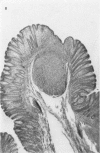Abstract
Two groups of 13 young baboons, each consisting of 8 males and 8 females, were fed on either high- or low-bran diets (based on wheat of either high or low extraction rate) for a period of 26 months. All animals grew well and remained in good condition throughout. Male (but not female) baboons on the high-bran diet had lower (p less than 0.05) concentrations of zinc in serum and bone, despite a low phytate: zinc molar ratio and a high intake of zinc. Particle-induced X-ray emission analysis showed there to be lower concentrations of calcium, copper, zinc, sulphur, potassium and nickel in the livers of baboons on the high-bran diet (P less than 0.005). Baboons on the low-bran diet passed smaller quantities of softer faeces, they had fewer nodules of lymphoid tissue in the distal portion of the colon (P less than 0.05), and within mucosal microherniations of their ileo-caecal valves the epithelial cells showed a greater tendency to squamous transformation (P less than 0.05). Mucosal microherniations of the ileo-caecal valves tended to be more frequent and larger in size (P less than 0.05) in animals of the low-bran group. Morphometrical studies did not reveal any differences in the general structural development of the digestive tract. The high-bran diet had no effect on serum cholesterol concentrations, nor on the incidence or severity of atherosclerotic lesions of the aorta.
Full text
PDF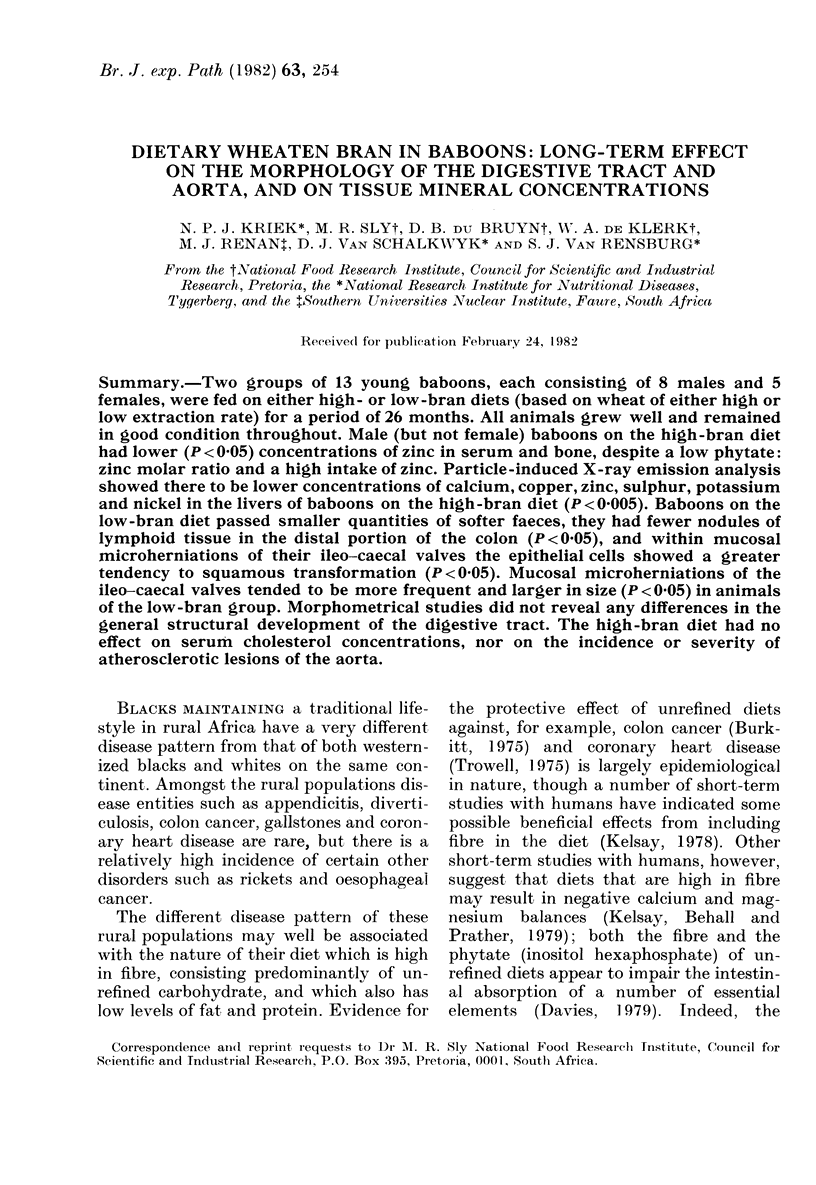
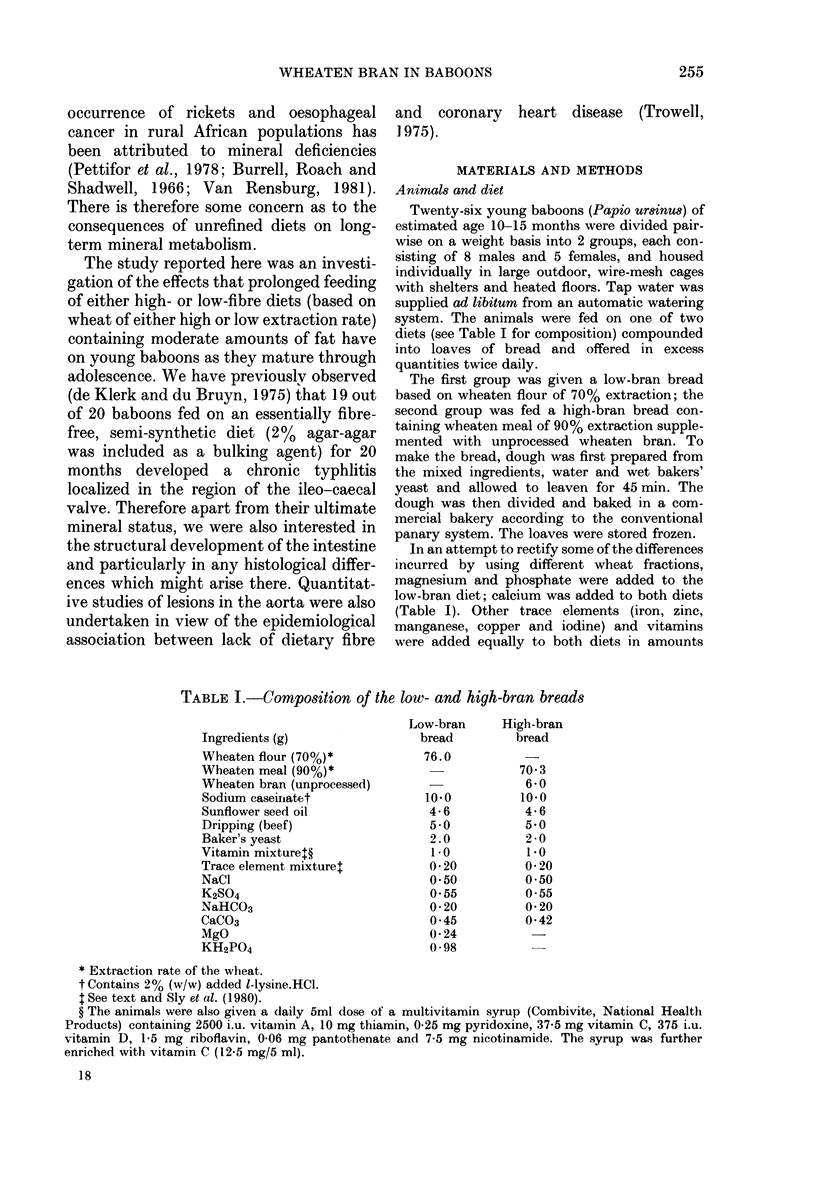

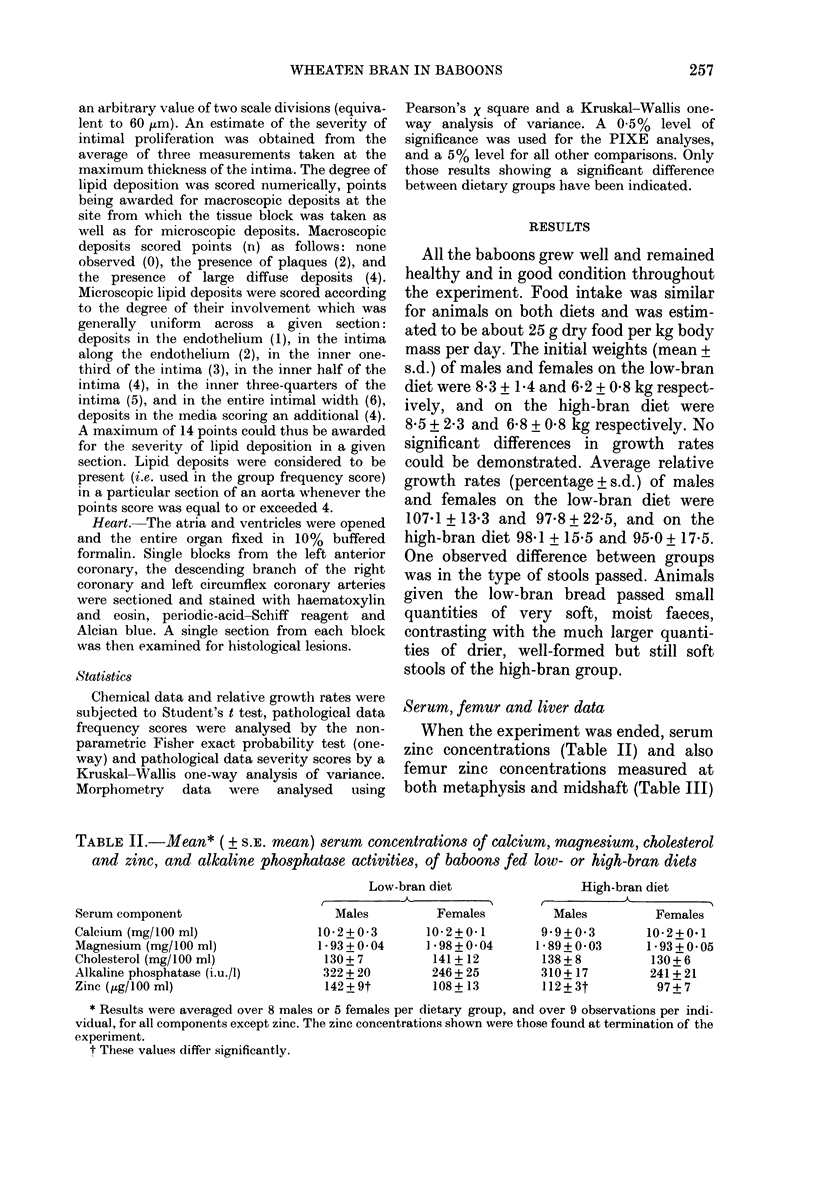
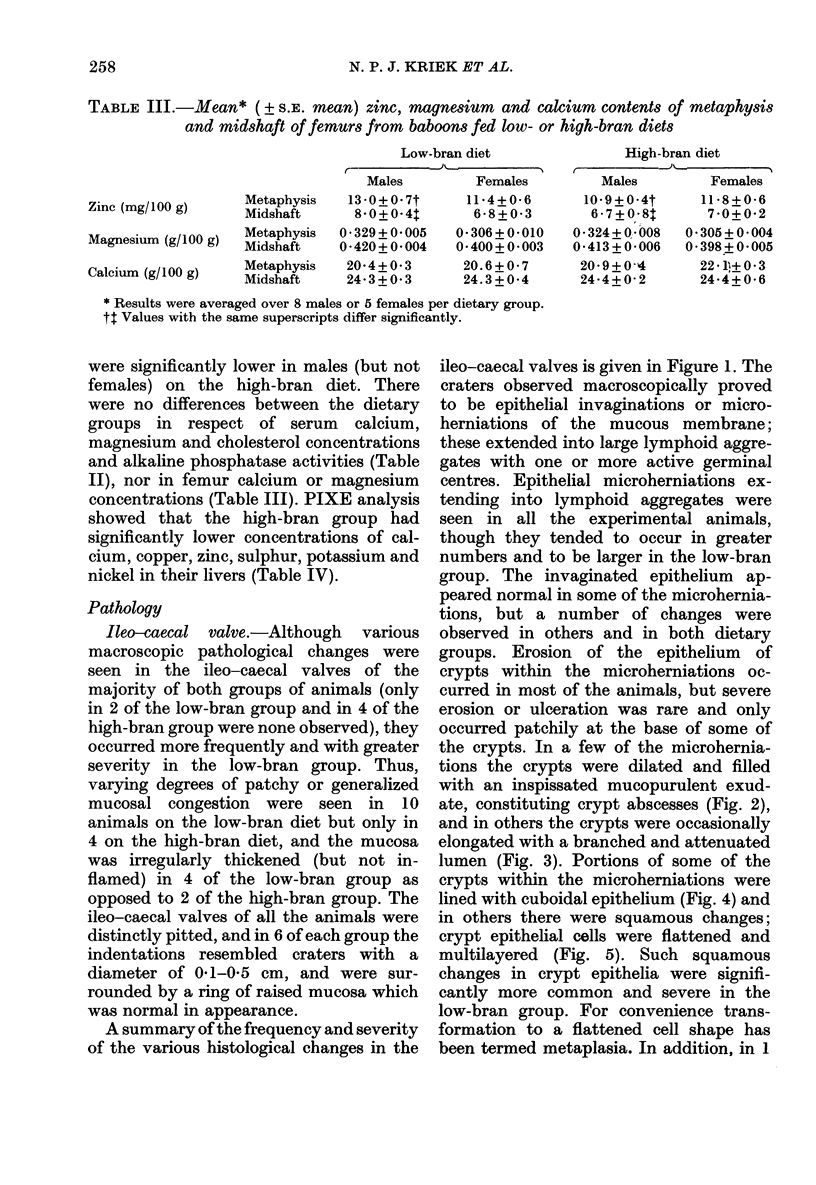
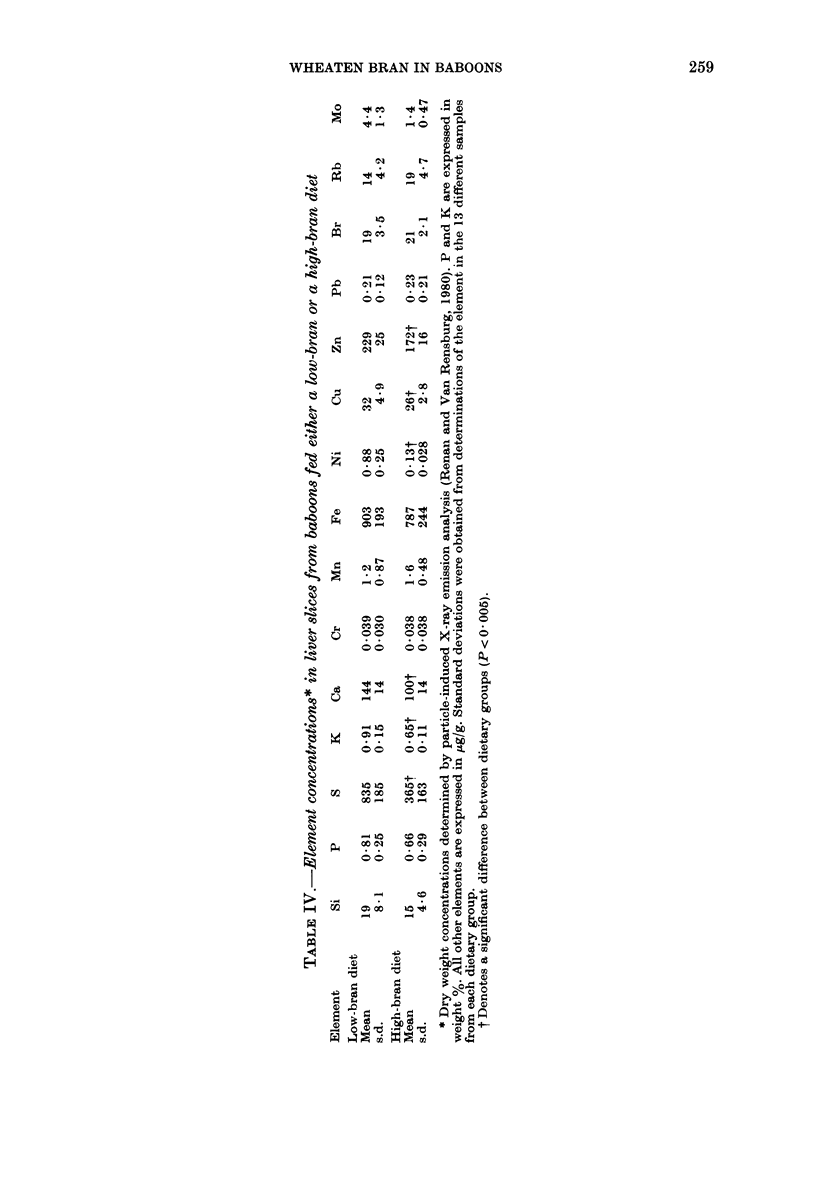

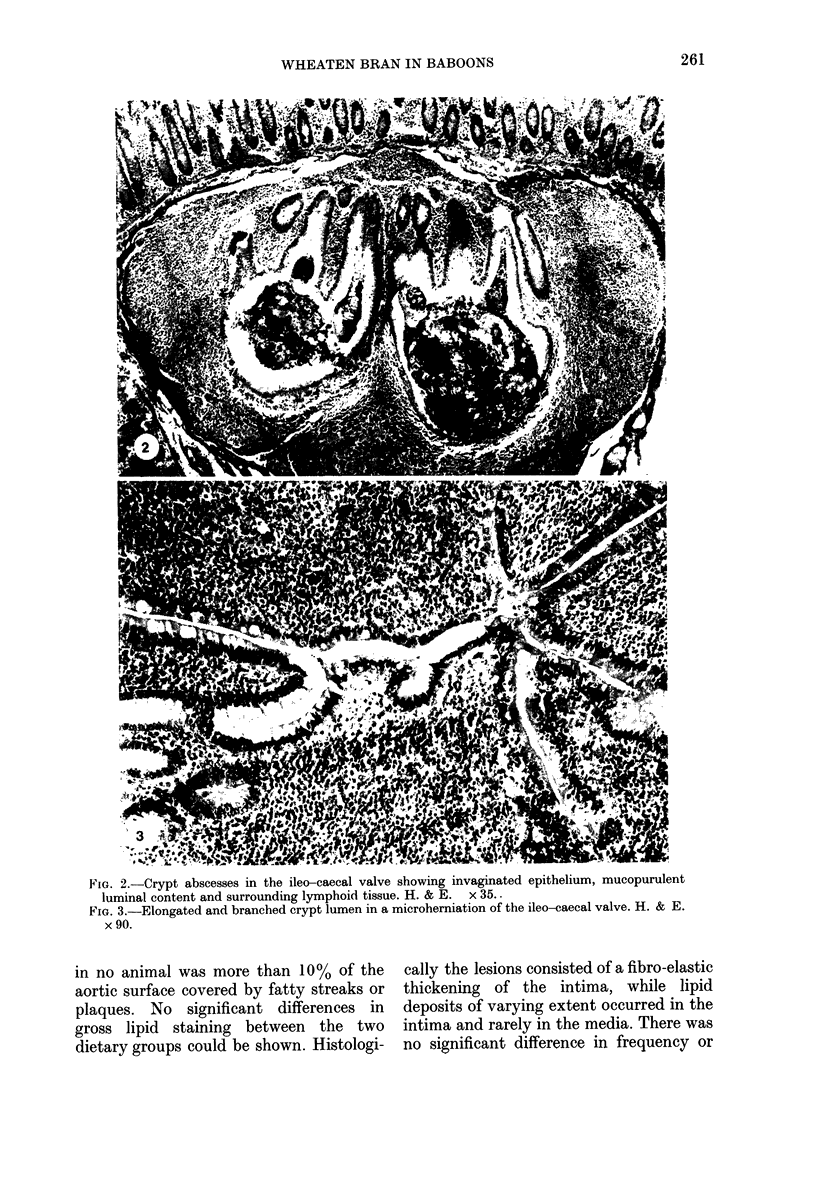
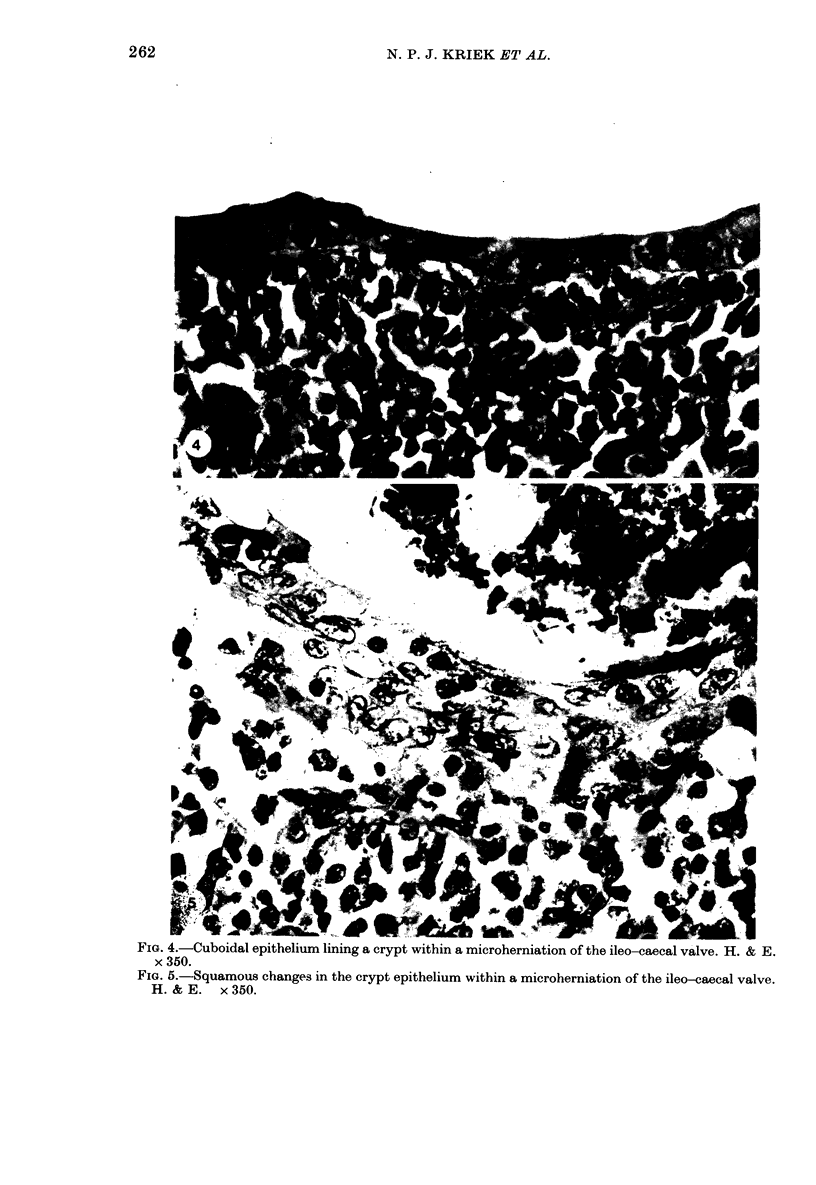

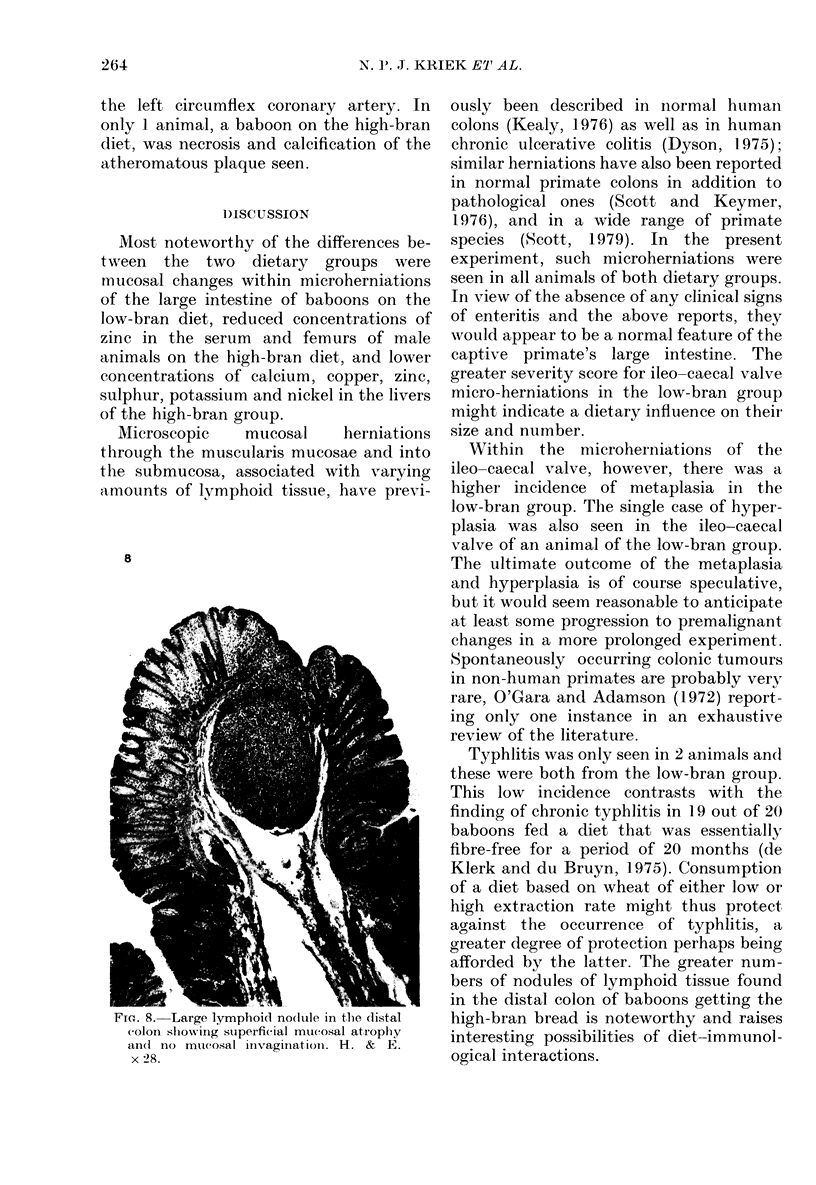
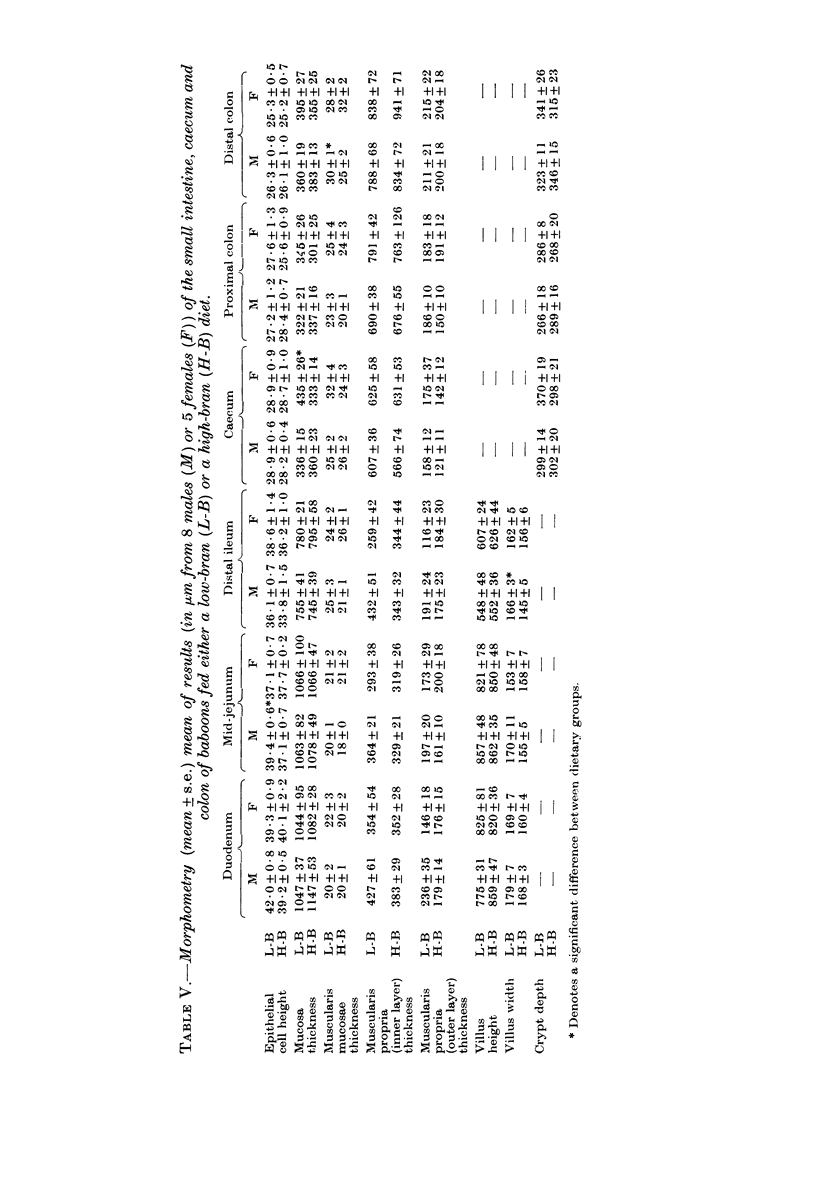
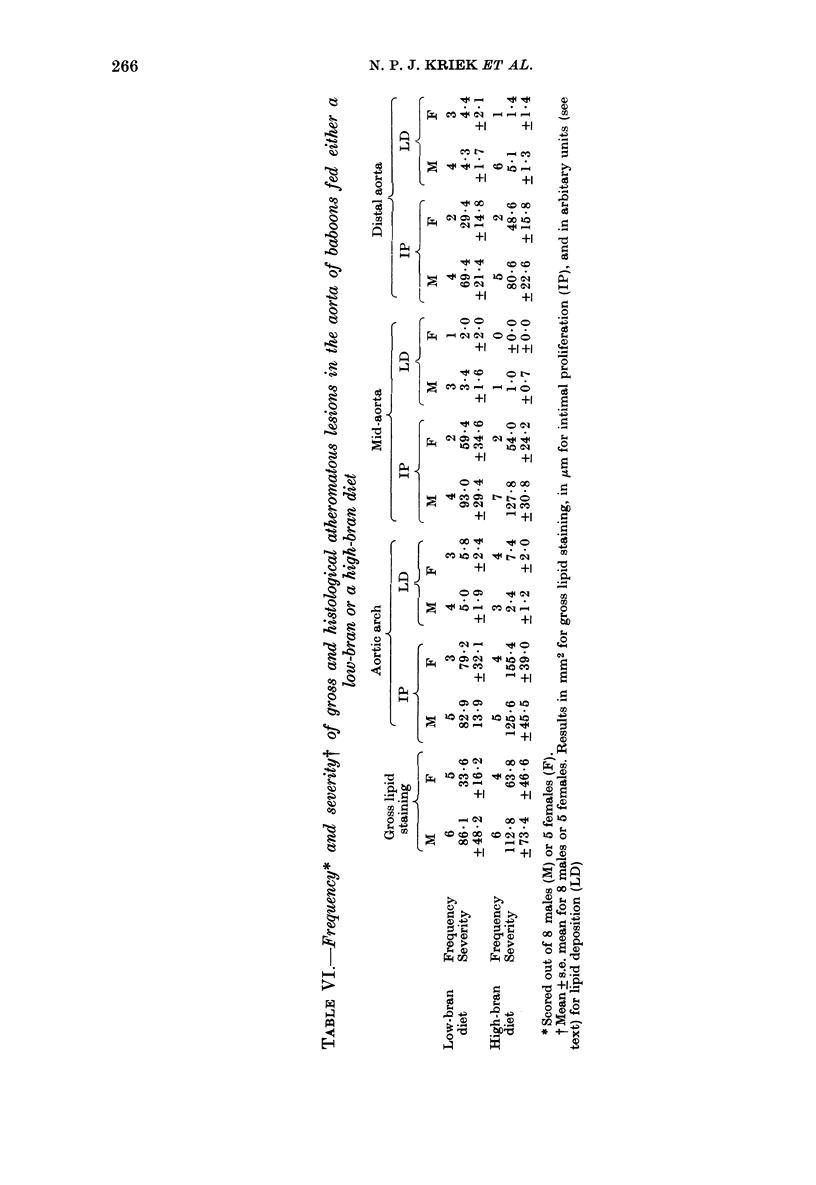
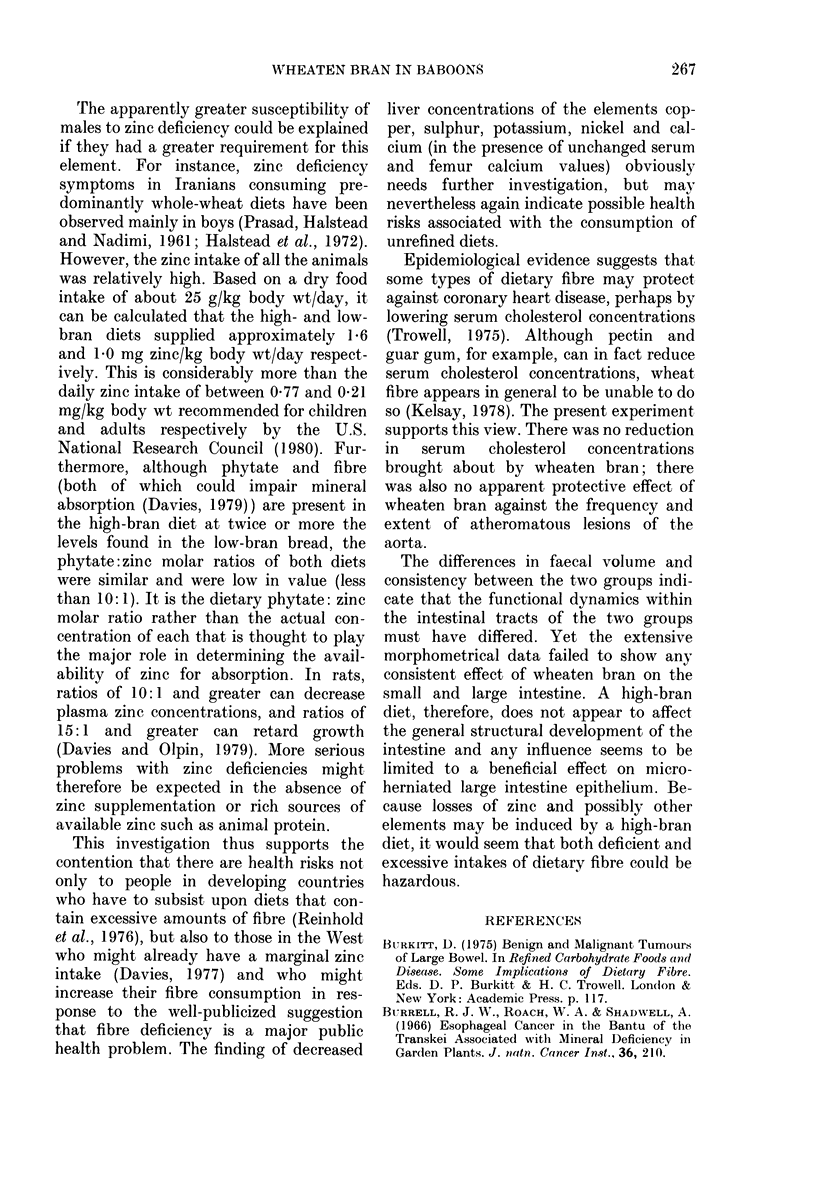
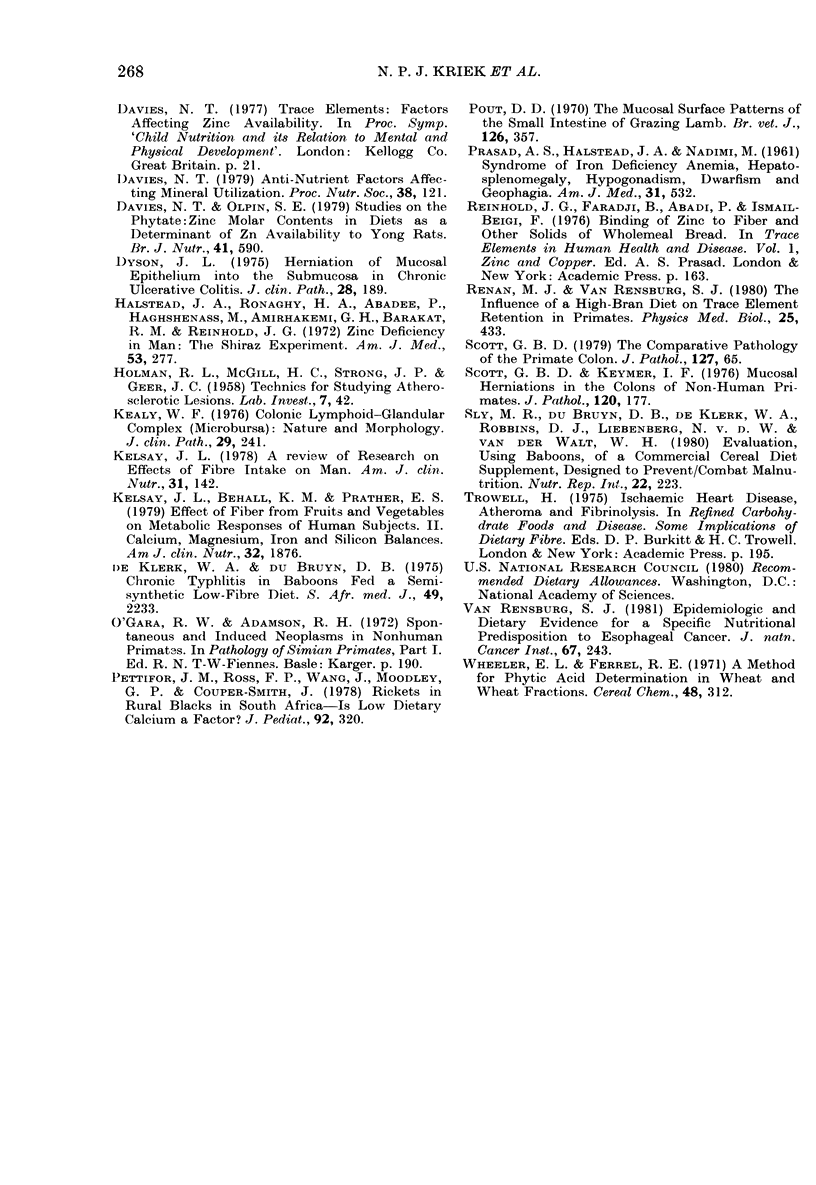
Images in this article
Selected References
These references are in PubMed. This may not be the complete list of references from this article.
- Davies N. T., Olpin S. E. Studies on the phytate: zinc molar contents in diets as a determinant of Zn availability to young rats. Br J Nutr. 1979 May;41(3):590–603. [PubMed] [Google Scholar]
- HOLMAN R. L., McGILL H. C., Jr, STRONG J. P., GEER J. C. Technics for studying atherosclerotic lesions. Lab Invest. 1958 Jan-Feb;7(1):42–47. [PubMed] [Google Scholar]
- Halsted J. A., Ronaghy H. A., Abadi P., Haghshenass M., Amirhakemi G. H., Barakat R. M., Reinhold J. G. Zinc deficiency in man. The Shiraz experiment. Am J Med. 1972 Sep;53(3):277–284. doi: 10.1016/0002-9343(72)90169-6. [DOI] [PubMed] [Google Scholar]
- Kealy W. F. Colonic lymphoid-glandular complex (microbursa): nature and morphology. J Clin Pathol. 1976 Mar;29(3):241–244. doi: 10.1136/jcp.29.3.241. [DOI] [PMC free article] [PubMed] [Google Scholar]
- Kelsay J. L. A review of research on effects of fiber intake on man. Am J Clin Nutr. 1978 Jan;31(1):142–159. doi: 10.1093/ajcn/31.1.142. [DOI] [PubMed] [Google Scholar]
- Kelsay J. L., Behall K. M., Prather E. S. Effect of fiber from fruits and vegetables on metabolic responses of human subjects, II. Calcium, magnesium, iron, and silicon balances. Am J Clin Nutr. 1979 Sep;32(9):1876–1880. doi: 10.1093/ajcn/32.9.1876. [DOI] [PubMed] [Google Scholar]
- PRASAD A. S., HALSTED J. A., NADIMI M. Syndrome of iron deficiency anemia, hepatosplenomegaly, hypogonadism, dwarfism and geophagia. Am J Med. 1961 Oct;31:532–546. doi: 10.1016/0002-9343(61)90137-1. [DOI] [PubMed] [Google Scholar]
- Pettifor J. M., Ross P., Wang J., Moodley G., Couper-Smith J. Rickets in children of rural origin in South Africa: is low dietary calcium a factor? J Pediatr. 1978 Feb;92(2):320–324. doi: 10.1016/s0022-3476(78)80035-3. [DOI] [PubMed] [Google Scholar]
- Pout D. D. The mucosal surface patterns of the small intestine of grazing labms. Br Vet J. 1970 Jul;126(7):357–363. doi: 10.1016/s0007-1935(17)48298-4. [DOI] [PubMed] [Google Scholar]
- Renan M. J., van Rensburg S. J. The influence of a high-bran diet on trace element retention in primates. Phys Med Biol. 1980 May;25(3):433–444. doi: 10.1088/0031-9155/25/3/003. [DOI] [PubMed] [Google Scholar]
- Scott G. B., Keymer I. F. Mucosal herniations in the colons of non-human primates. J Pathol. 1976 Nov;120(3):177–181. doi: 10.1002/path.1711200307. [DOI] [PubMed] [Google Scholar]
- Scott G. B. The comparative pathology of the primate colon. J Pathol. 1979 Feb;127(2):65–72. doi: 10.1002/path.1711270204. [DOI] [PubMed] [Google Scholar]
- de Klerk W. A., du Bruyn D. B. Chronic typhlitis in baboons fed a semisynthetic low-fibre diet. S Afr Med J. 1975 Dec 20;49(54):2233–2234. [PubMed] [Google Scholar]
- van Rensburg S. J. Epidemiologic and dietary evidence for a specific nutritional predisposition to esophageal cancer. J Natl Cancer Inst. 1981 Aug;67(2):243–251. [PubMed] [Google Scholar]









